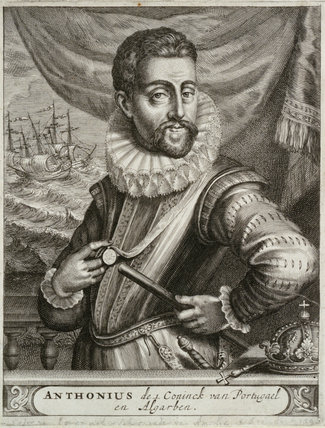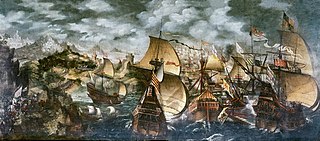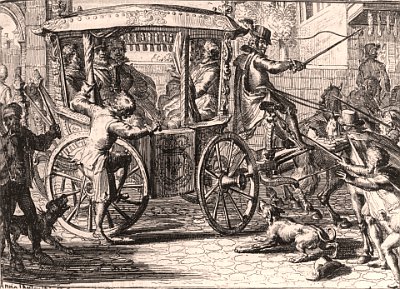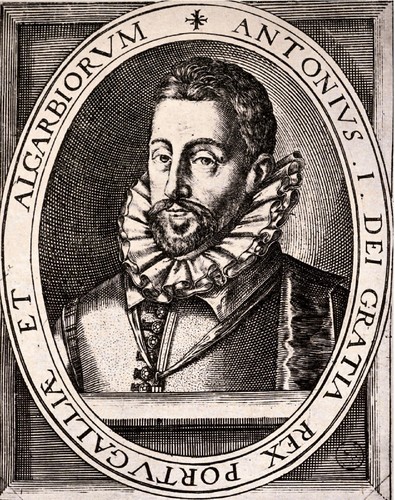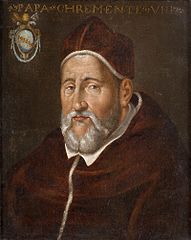Chapter IV - House Arrest
Chapter IV
House Arrest

Don Carlos in his darkest days
House Arrest

Don Carlos in his darkest days
Don Carlos, Prince of Asturias, would not be allowed to leave the grounds of his new residence, the Alcazar of Madrid, for the next ten years, being kept on a close watch by several guards who, while officially tasked with protecting him, were in fact charged with guarding him, preventing him from doing harm to himself or others. Overseeing this guard, under orders of the King himself, was Princess Elisabeth who, unlike her husband, had proven herself worth the trust and affection of Philip.
It was not an easy task, to look after the Prince, mostly because, having fallen, directly from a state of wrath, to one of melancholy as none had ever seen in him, not even in the darkest days of the past, he had decided that life was no longer worth living and would try to end it by his own hand, something that, understandably, could not simply be allowed. This meant, at first, the removal of all blades from his presence that could be used to spill blood; his food would be presented cut up in small pieces with no choking hazard and all and any activities involving blades were strictly forbidden. All rooms were inspected to be removed of blades and, those that simply could not do without them, such as the kitchen, were kept off-grounds to the Prince. The doors to his apartments were kept locked, the windows were nailed shut and the servants who were allowed access into them were few and accounted for. And none of them were women; the only feminine contact the Prince was allowed was that of his wife. The prince had, afterwards, thought of drinking himself to death, or ingesting some mix that would make him perish, which forced his quarters to be deprived of all bottled liquids or in fact, all substances that were not the food he was eating at the moment. Constant vigilance of his actions was also accomplished to prevent further attempts at acting towards his own demise.
With action being restricted to him, Don Carlos they opted for inaction as the way of ending his suffering, by attempting to fast himself to death, refusing all food and drink that was provided to him. He lost weight severely and felt ever weaker, with his mind in particular suffering from the lack of nutrition, until, taken by the wails of his wife, he satiated his hunger and restored his health, not wanting to see her suffer thus. This episode would be repeated a few times a year, but in each of them Don Carlos would back away before being too late, although the doctors did warn that it could cause further problems later on.

These were dark days for Carlos, who was isolated from the rest of the world beyond his wife; his lifelong companions, John of Austria and Alexander Farnese, would be separated from him for the first time. John of Austria would visit the Alcazar once, in early 1569, on his way to Granada; he had been made Captain General of the Spanish forces and tasked with defeating the Morisco rebellion in the city, the Rebellion of Alpujarras, and hoped he could meet and perhaps even rekindle the friendship with the prince. Suffice it to say the Prince wasn’t interested, and in fact he would henceforth get in a wrathful mood whenever the name of his uncle was said in his presence. John of Austria would quell the rebellion and would later lead the armada of the Holy League against the Ottoman Porte at Lepanto, to an astounding success, gaining much fame and glory for himself. Alexander Farnese, married to Princess Maria of Portugal, governed the Netherlands, a job that nobody would envy now, as he faced an unapologetic rebellion against the monarchy, led by William of Orange and supported by both England and France. His policy was ruthless and yet diplomatic, sacking several cities bloodily while trying to find a middle ground between the two factions, and in particular trying to cause a drift among linguistic and religious lines in the rebels, which failed due to a common shared outrage at the actions of the Duke of Alba and the King. Although officially rebelling for ‘the rights of Prince Karl, our Lord’, it was known that their goal was ridding themselves from the despotism of King Philip and the Spanish.
One of the few joys to the lives of Don Carlos and Elisabeth alike, was their daughter, who had, apparently, been conceived in Paris, during some of their last truly happy days together. The sole child of the couple, Isabella Clara Eugenia was beloved by her parents and by her grandfather as well, who confided to the mother he was glad she was a girl and not a boy. She wouldn’t see her father often, and it would always be under the close supervision of her mother, but he was always very happy to see her, and very warm and kind around her, never showing any of the tendencies Elisabeth had learned to fear in her husband.
Isabella was a very intelligent girl, whose mother made sure to get the very best tutors in Spain and, as she grew older, her father would get, surprisingly, quite involved in her education, at least considering his limitations. They both had a liking for mathematics, although Isabella proved herself more apt in that regard than her father had ever been, and she seemed as much of a polyglot as her father and, according to some, surpassing him and being an equal to her great-grandfather, Emperor Charles V. She learned Spanish, Portuguese, Italian, Dutch and French, although her mother only allowed her to practice the latter with her father, and always in her presence, to make sure she understood everything they shared with each other, fearing that her daughter too could be contaminated with Protestant thought (suffice it to say that, when it had come to cleaning his rooms from dangerous things, the French Bible had been treated as if a poisoned blade). The young Infanta was also a favourite of her grandfather, who exchanged many letters with her and had her visit the court at Toledo often; he would teach her about politics and matters of rulership, lessons she took to heart.

In early 1578, almost ten years into the exile of Don Carlos into the Alcazar of Madrid, he received a curious letter. It seemed his cousin, King Sebastian of Portugal, was preparing a great campaign against Morocco, meant to put on the throne a sultan friendly to the Christian powers, rather than the Ottoman Porte. He was an ambitious young monarch, much like Carlos himself, who had great dreams of expanding Christendom to North Africa. And, for this great effort, he was asking for the support of his Spanish cousins. Don Carlos was quite interested in the prospect, suddenly hoping to be allowed to leave the Alcazar and join Sebastian in his campaign, one of his overjoyed moods of hope and excitement. And he was, of course, immediately rebuffed by his father, who not only wouldn’t even consider letting him leave his residence, much less to head on a military campaign, and in particular to a military campaign the King wasn’t particularly confident in, as he was rather sceptical of his nephew’s optimism.
Turns out King Philip was correct in his assessment for, as, in the one battle fought in the campaign, the infamous Battle of Alcácer Quibir, or the Battle of the Three Kings, was a great disaster for the Portuguese Army, who were outnumbered and outwitted by the Moroccan forces, 8000 dying and 15000 being captured, including the flower of Portuguese nobility, who were held to ransom by their captors, an unmitigated disaster unlike any the history of the country had ever seen. Among the dead, or at least the presumed dead, since they were never to be seen or head from again, was King Sebastian himself, whose body would never be found.
Sebastian had been negotiating with various other monarchs for a marriage for his royal person, notably with Princess Margaret of Valois, the youngest sister of Princess Elisabeth, with Elisabeth of Austria, a daughter of Emperor Maximillian II, and even opening up negotiations to wed Princess Isabella, for the sake of another formidable Iberian match. However, he had ultimately pledged himself not to marry until the Moroccan issue was resolved. As it turned out, it would never be resolved, and, upon his death, Sebastian had no sons or brothers to succeed him, his father having died before his birth. His closest living kin was, in fact, none other than Don Carlos himself who, by all rights, could claim for himself the Portuguese Crown.

The death of Sebastian immediately sparked a controversy as to who would succeed him; among the claimants, was Don Carlos and his father, King Philip, both being sons of Portuguese Infantas, Ranuccio, the eldest son of Alexander Farnese and his Portuguese Infanta wife (although that particular branch, out of respect for their Spanish cousins and patrons, wouldn’t press their claim very loudly, preferring to remain by the Netherlands), the Duke of Savoy, whose mother was also Portuguese, Catherine, the Duchess of Braganza, daughter of Infante Duarte, Duke of Guimaraes, António, Prior of Crato, a natural son of Infante Luís, Duke of Beja, and, lastly, the Cardinal-Prince Henry who, as Regent, was now tasked with trying to find a solution to this issue, as external forces looked hungrily at his country.
Neither Farnese nor Savoy bothered to press their claims, preferring to keep peace with their Spanish patrons. This effectively reduced the debate between the Spanish claimants and the Portuguese ones and, within each camp, between a father and a son, and between a woman, a bastard or an ordained elderly priest. Of those five, the first to withdraw himself from the race was Cardinal Henry, preferring instead to serve as mediator; although he did, for a time, consider the Crown, as the last legitimate member of the House of Aviz, the Pope had made it clear he would not release him from his vows, and he was old and tired already. Beyond dealing with the dispute, he was charged with negotiating the ransoms with the Moroccan sultan, an issue he struggled with greatly.
The Spanish had a privileged position; they were strong and wealthy, compared to the dilapidated Portuguese Army and Treasury that suffered from the battle and the ransoms. However, the prospect of falling under a foreign monarch concerned many of the notables of the Kingdom. When the allies of the Spanish cause approached King Philip, they therefore proposed that he renounce his claim in favour of supporting that of his son, genealogically closest and with the added benefit of delaying the inevitable union of the crowns. After dithering, Philip reluctantly accepted, sending a force to secure by arms the rights of Don Carlos to the Portuguese throne.
In Lisbon, Cardinal Henry consulted his regency council as to what action they should take. Having been already bribed by King Philip, the councillors advised for the Cardinal to recognise the claim of Don Carlos and allow the Spanish forces to enter Lisbon with open arms, which the Cardinal, although reluctant, eventually accepted, hoping that the wealth of the Spanish Monarchy could help restore the finances of the country and return the imprisoned nobles in Morocco.
Not all would be so welcoming, however, as some opponents of the Spanish started amassing around the only candidate who showed himself willing to fight it out, António, Prior of Crato, who amassed loyal forces in Santarém, ready to face the Spanish and block their march into Lisbon. However, his forces were few and not the very least prepared or capable of resisting the professional army sent to Lisbon with the Habsburg standard, led by Don John of Austria. It was an easy victory for the Spanish, forcing the Prior of Crato to flee, wounded and deserted, to the court of Queen Elizabeth of England.
Upon reaching Lisbon safely, Spanish forces led by Don John of Austria took over the city, welcomed by the Cardinal-Prince Regent Henry and his council, and summoned Don Carlos to come take his place as King of Portugal. For the first time in a decade, the Prince of Asturias was to not only leaving his home, but the country entirely, to rule once again, this time solely on his name, with no overlordship from his royal father


